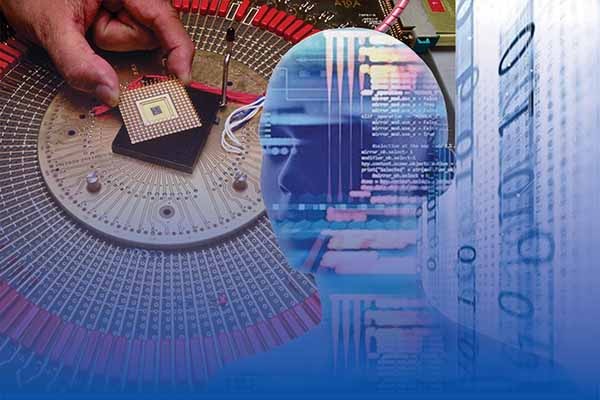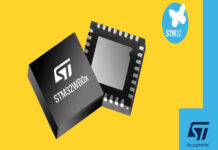In today’s use cases the integration of Artificial Intelligence has become evident. Especially when you see the changing landscapes in the semiconductor industry, deep investments in AI platforms has become individual company’s top mission. Today Artificial Intelligence (AI) has become a powerful tool to transform vast amount manufacturing data into insights further enhancing manufacturing processes. Semiconductor manufacturing has been complex and given today’s time it has become more valuably critical. With thousands of sensors and ten of thousands of Integrated Circuits(ICs)r wafer. In where, each wafer comprises billions of transistors and interconnect lines and multiple electrical and physical measurements per wafer. The use of advance technologies such Artificial Intelligence, Machine Learning, Deep Learning, Computer Vision and image processing.
An interesting report states, “Semiconductors lie at the heart of HPC. According to Report Ocean, the global HPC chipset market size is expected to reach USD 13.68 billion by 2027 from USD 4.30 billion in 2019.” AI has been a major catalyst for the semiconductor industry to generate business and extract economic value at every stage, from operations to design to fabrication to R&D to manufacturing to sales and even the supply chain. Let’s check out in this article, what technologies like AI/ML conveys to the semiconductor industry in 2023.
At the chip development and designing stage, AI can be used to avoid time-consuming iterations and ramp up yield. AI can be leveraged to automate the time-consuming processes related to physical-layout design and the verification process: The semiconductor manufacturers were able to reduce up to 30% of production costs.
Machine Learning for Semiconductor Industry
Recent years have witnessed great achievement in machine learning (ML), which has influenced many other fields beyond computer science. Today, machine learning is a fast-growing tool from computer science which significantly speeds up the data analysis. In recently years, many researches on machine learning study of semiconductor materials and semiconductor manufacturing have been reported. Deploying ML algorithms help identify patterns in component failures, predict likely failures in new designs, and propose optimal layouts to improve yield. Electronic products based on these semiconductor devices have been changing the world and our daily lives. This achievement is credited to the development of the semiconductor manufacturing as well as the rapid progress in material science. On the other hand, in these two fields, i.e. semiconductor material science and semiconductor manufacturing, massive data have been accumulated and countless relevant problems have arisen. Therefore, apart from traditional research method, more efficient methods are needed to deal with these data and problems. ‘Deep Learning’ became popular in the field of ML and neural networks with more and more layers have been proposed. Meanwhile, ML method has been used in many other fields beyond computer science, including semiconductors.
Virtual Inspection of Wafers with AI

Wafer inspection systems in the production process are vital. AI has the power to revolutionize modern wafer inspection systems. AI has a major role to play in automatically detect and classify defects early in the production process and with very high accuracy–even better than human inspections.
Machine Learning in Smart Manufacturing
It is important for semiconductor manufacturing to predict yield and understand the impact of process parameters on yield. Fig. 1 shows an example of correlation of product yield drop and process recipe change causing two parameters to change. Such correlation can be recognized automatically by certain supervised discriminative ML algorithms such as regression and Convolutional Neural Networks (CNN) for pattern recognition.

Predictive Maintenance with AI
Predictive maintenance techniques help determine the anomalies in operations and identify possible defects, if any, to fix them before they fail. AI can identify the slightest of anomalies.
According to a McKinsey report, applying AI/ML could yield up to USD 20 billion in annual value while reducing the current R&D cost by 28 to 32 percent.
India’s Semiconductor Dream Has an AI Vision
In a traditional technology stack the semiconductors required are for storage, memory, logic and networking. Among these, while the processors continue to occupy the premier position chasing the Moore’s law by shrinking the linewidths to 5 nanometers, as per an IRDS report, storage will witness the highest growth due to humongous amount of data that is stored and is required to be processed for deriving intelligence in the application concerned. But the semiconductor industry will continue to reap most profits in computing, memory and networking solutions creating best opportunity for value creation.
No country is 100 % independent in their semiconductor requirements even as the countries notably leading the supply are Taiwan, South Korea, Japan, USA and China. Following table gives the percentage share of semiconductor foundries revenue globally, and the semiconductor industry global market share country wise, and shows how lobsided the spread is as follows;

However, these very countries are seeking heavy investments in design and manufacturing of semiconductors to capture a larger share of global market and maintain a leadership position resulting in accelerated economic growth and giving a strategic advantage to the country globally.
India currently imports its 100% of semiconductor requirements with an estimated imports of products worth US $ 15 billion in the year 2020, as per sources from MeitY. The irony is that India enjoys the distinct status of a leading global semiconductor chip designer with approximately 20,000 engineers engaged in this profession working for practically all major global semiconductor manufacturers. We will deal with this later in this paper.
Thus far, PCs and Mobiles have been the largest consumer of semiconductors due to their exponential growth in the previous decade. With the plateauing of demand in these sectors the semiconductor industry has to redefine its strategy to focus on other sectors that promise potentially high market growth to sustain return on investment. As per the data released by IRDS, the semiconductor industry is only able to capture 20-30% of the total value of PC stack and merely 10-20 % of the smart phone market. Such a diminished value creation is not enough to justify the capital investment made in design and manufacturing of semiconductor devices unless it brings in innovation to find newer opportunities and market segments.
The revolution in Artificial Intelligence technology and its potential applications comes as a rescue to the semiconductor industry providing it the greatest opportunity in the current time to create value of the kind it has had in the previous decades. One is applying AI/ML use cases to semiconductor manufacturing and designs to optimize on costs. As the manufacture of semiconductors is the largest cost driver, as per a McKinsey estimate, AI/ML will accrue most value – upto about 40% – and decrease in costs by about 17% through automation and verification during production cycles, efficient tool design for enhanced performance, use of computer vision for inspection, assess tool fatigue, prevent machine down times and minimize overall chip production processing time. Further, for semiconductor design apply AI/ML use cases to avoid time consuming iterations and ramp up yield to reduce costs possibly by upto 28-32%. Also use ML to identify patterns in component failures and predict likely failures and adopt optimal layouts that prevent or minimize failures. Further, use AI in production planning, supply- chain and optimum pricing based on consumer data analytics on the available data.















